Elevador de Santa Justa
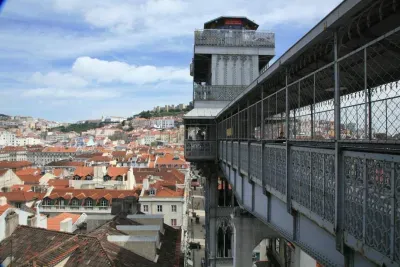
The Elevador de Santa Justa (Santa Justa lift) is a 47 metres (145ft) Lisbon's only remaining vertical elevator and connects Rua do Ouro in the Baixa to Largo do Carmo near Bairro Alto. It was built, along with several other cable powered urban lifts and funiculars, in a time before cars and the Metro. Whilst this may sound quite utilitarian and uninteresting nothing could be further from the truth.
Convento do Carmo
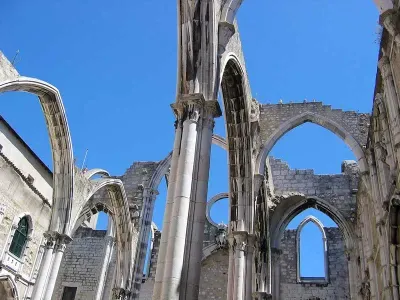
Mediaeval convent that was ruined in the great earthquake of 1755. Set overlooking the city the ruins provide a poignant reminder of the destruction wrought on Lisbon. The convent is also home to an archaeological museum with exhibits including a Peruvian mummy.
Basílica de Nossa Senhora dos Mártires
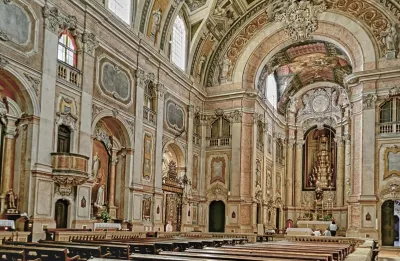
The Basilica of Our Lady of the Martyrs (Basílica de Nossa Senhora dos Mártires) is one of a trio of Rococo / Baroque churches built within a stone's throw of each other on Chiado's Rua da Garrett. This and the other two strikingly similar churches were built in the late 18th century after much of the area was flattened by the great earthquake of 1755.
Arco Triunfal da Rua Augusta
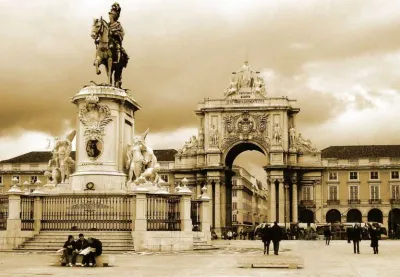
Positioned on Praça do Comércio and acting as a grand opening onto the Baixa's central Rua Augusta, this ornate and imposing archway is also known as the Rua Augusta Arch.
As the name hints, the Arco Triunfal was originally built to commemorate Lisbon’s reconstruction following the devastating earthquake in 1755, although the version that exists today dates from 1875.
Praça da Figueira
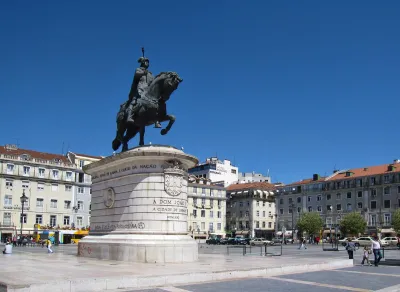
Praça de Figueira is a large square in the centre of Lisbon, one of three in the Baixa district. The name translates as fig tree square, although there is little sign of the original trees. The square was created in the 18th Century after the Lisbon earthquake of 1755 had destroyed the buildings that had stood on the site beforehand (as well as much of the rest of the city). It had previously been the location of Lisbon’s main hospital; the Real de Todos os Santos.
Praça do Rossio
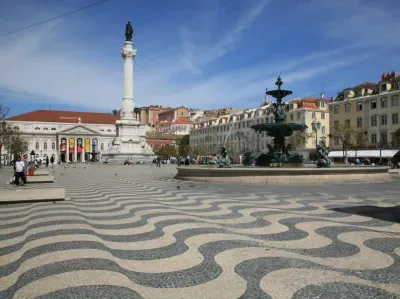
If you’re looking for the heart of Lisbon, this centrally located square with its traditional Portuguese mosaic cobbles has been one of the city’s main plazas for centuries. Located in the downtown Baixa district it is officially known as Praça Dom Pedro IV, the locals prefer to use its old name, 'Rossio'.
Praça do Comércio
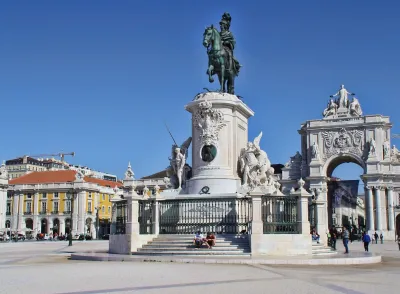
No visit to Lisbon would be complete without a stop-off at the majestic Praça do Comércio, one of Europe's largest squares, surrounded on three sides by classical 18th century buildings and opening up on the south side to the Tagus River estuary. This plaza was once known as the "gateway to Lisbon", in recognition of the time when merchant ships arriving at the port would offload their cargo here. This was also where passenger ships disembarked.
Igreja de São Domingos

Lisbon’s Igreja de São Domingos church, in the Baixa district, has played a key role in many of the city’s tumultuous historical events. It has seen earthquakes, fires, pogroms as well as royal weddings and other historic ceremonies. Today there is a palpable sense of history, and as well as having a vibrant congregation. This place draws in tourists who come here to escape the hustle and bustle of city life, and soak in the sombre atmosphere of this unique, if slightly eerie place of worship.
Igreja de Santo António
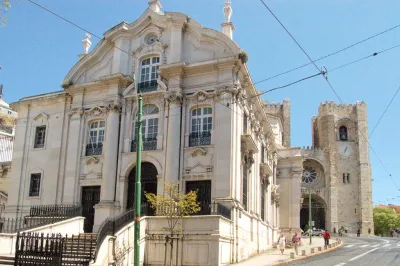
Saint Anthony is Lisbon’s main patron saint and this church, dedicated to his memory is thought to have been built on the exact spot where he was born in 1195.
Igreja de São Roque
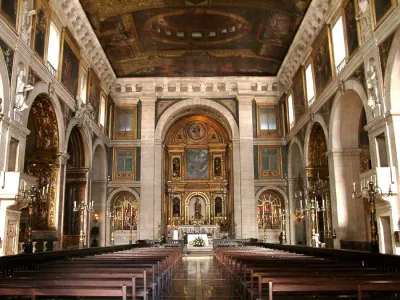
The earliest Jesuit church in Portugal and one of the first in the world, the Igreja de São Roque was built in the 16th century specifically for preaching. When built it was positioned beyond the walls of the city to cut it off from Lisbon and was used as a burial ground for those victims of the plague. It is one of the few buildings in Lisbon to survive the 1755 earthquake.